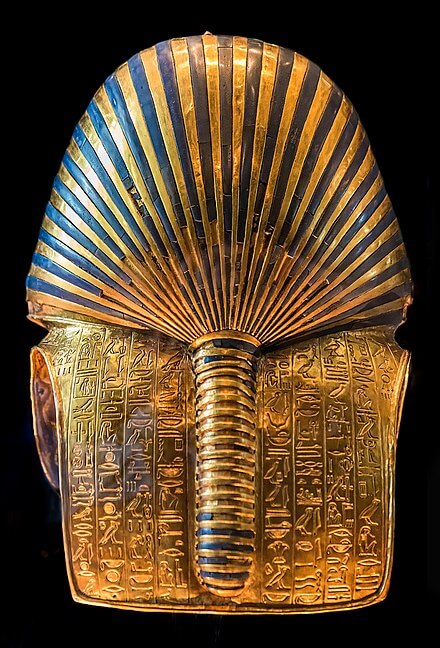Every day for 30 days we will be featuring a museum object that has inspired or intrigued us, in the hope that “an object a day keeps the doctor away.” We love creating exciting, meaningful storytelling through engaging experiences, but still firmly believe that it is hard to beat the thrill of being in the presence of authentic artefacts. Today’s object is: Tutankhamun’s mask.

We’ve had a life mask, now we have a death mask. When something is nearly 4,000 years old but almost boringly familiar, it is testimony to the ubiquity of its use as an iconic image. Even though we are looking at the back view of Tutankhamun’s mask here, we already all know what it looks like.
I was six years old when the Treasures of Tutankhamun exhibition came to the British Museum in London in March 1972. By the end of the year it had been seen by 1.6 million people, making it the most popular exhibition in the museum’s history and sparking a new wave of Egyptomania.
Of course there has been a steady stream of pop culture associated with the curse of the mummy since Howard Carter’s sensational opening of Tutankhamun’s tomb in 1925. As he wrote at the time:
“The pins removed, the lid was raised. The penultimate scene was disclosed – a very neatly wrapped mummy of the young king, with golden mask of sad but tranquil expression, symbolizing Osiris … the mask bears that god’s attributes, but the likeness is that of Tut.Ankh.Amen – placid and beautiful, with the same features as we find upon his statues and coffins. The mask has fallen slightly back, thus its gaze is straight up to the heavens”
The 18th-dynasty ancient Egyptian Pharaoh Tutankhamun reigned from 1332 to 1323 BC. One of the things I love above this object apart from its undeniable beauty is the inscription around the collar at the back of the mask. The words are taken from The Book of the Dead that by the time of the young Pharaoh’s death would have been regarded as ancient history, having been written nearly 500 years earlier. It reminds us that everything is relative.
The Tutankhamun collection will be rehoused in The Grand Egyptian Museum due to open in 2021.
